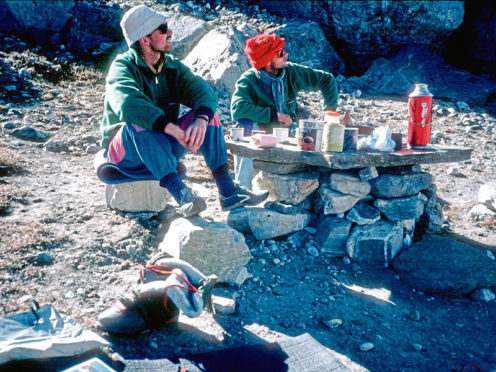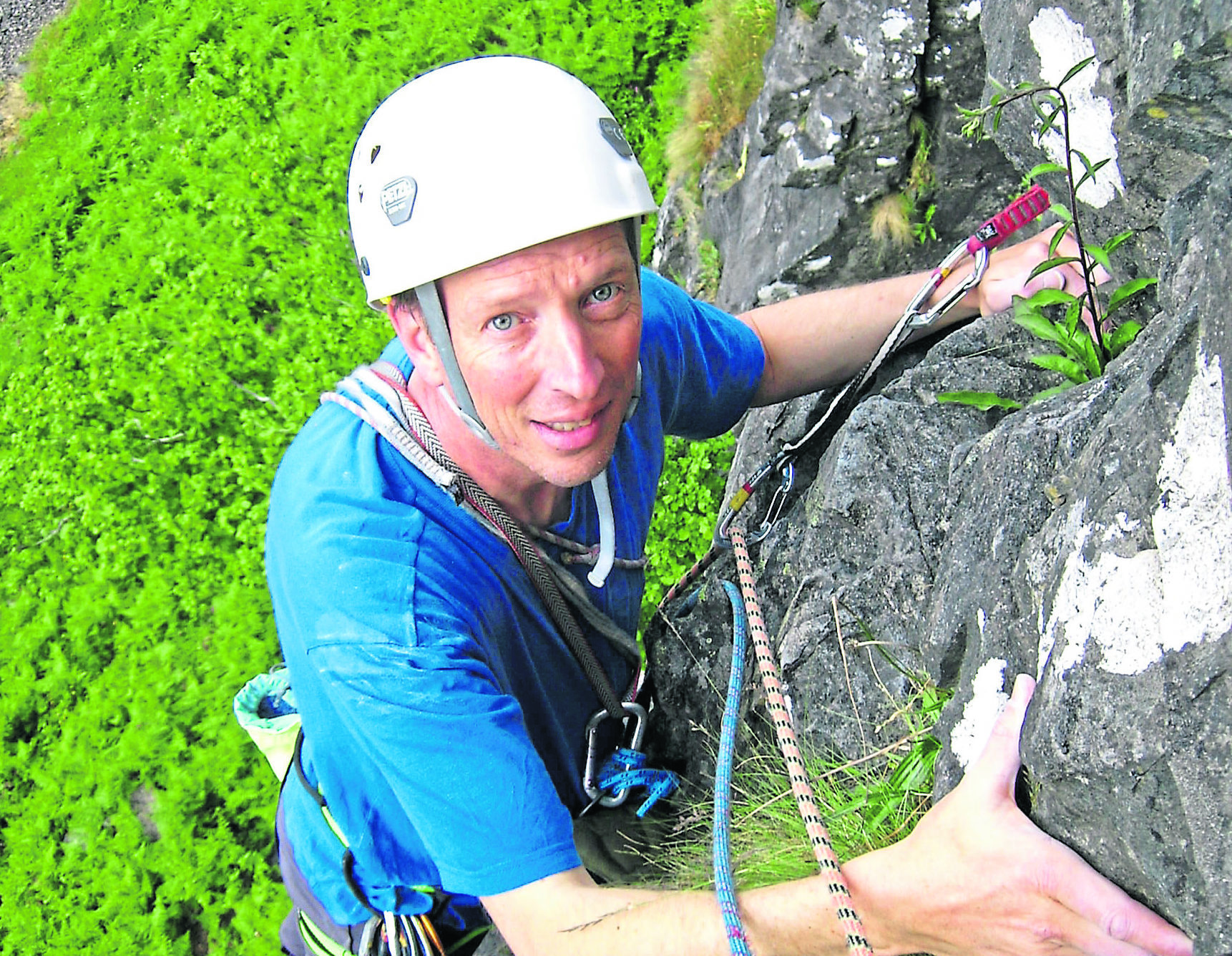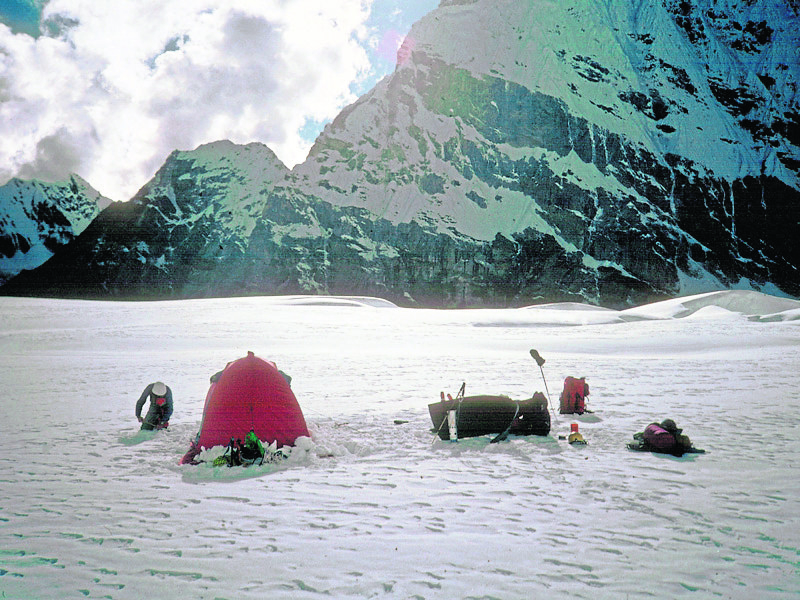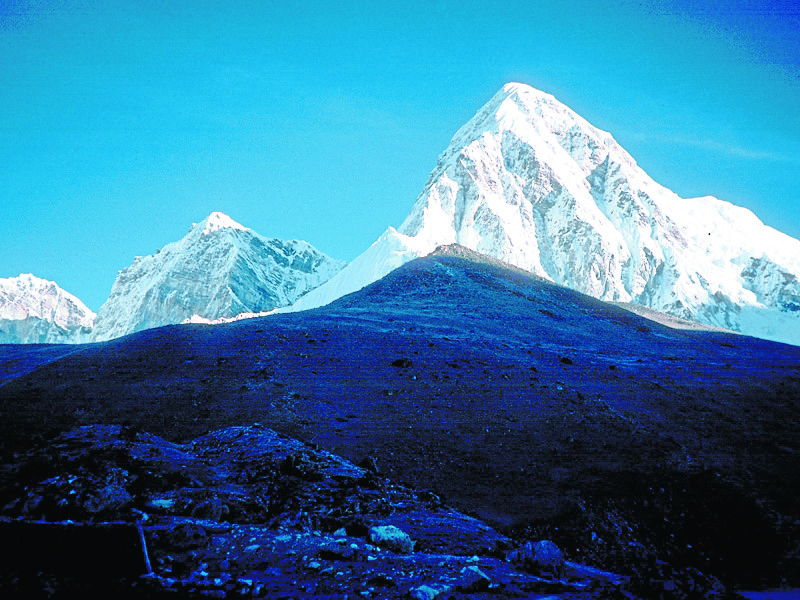A Highland mountaineer, who spent weeks searching for two friends who disappeared in the Himalayas more than 30 years ago, has spoken of his relief after their bodies were finally found.
Steve Aisthorpe, 55, was a member of an expedition to Pumori on the Nepal-Tibet border with Kristinn Rúnarsson and Thorsteinn Gudjonsson who were last seen alive at a height of 21,650ft on October 18, 1988.
Their remains were discovered last month by an American mountaineer on a glacier below the climb route, which suggests they fell into a crevasse.
Mr Aisthorpe, a mission development worker for the Church of Scotland, now believes his friends, who were both 27, had either reached, or almost reached, the ridge at the top of the face when disaster struck their mission.
In the intervening years, they have been slowly moved down the mountain by a retreating glacier.
The bodies were brought back to Kathmandu, the capital of Nepal, by a group of local climbers and a cremation service was attended by relatives of the men who took their ashes home to Iceland.
Mr Aisthorpe of Kincraig, near Aviemore, who was 26 at the time of the tragedy, spoke movingly about how faith had bolstered his spirits throughout the ordeal.
He met the two Icelandic climbers when they were all planning various expeditions in Nepal. He still keeps in touch with their families and is planning to meet them in the New Year.
He said yesterday: “The discovery of the remains of Thorsteinn and Kristinn, after so many years, has inevitably brought many emotions to the surface for all who knew and loved these wonderful guys.
“But it has also brought people together and I pray it will help with greater closure and, in time, peace.
“My diary of the expedition reminds me of how, as someone who had only recently embraced the Christian faith, I found comfort and guidance as I turned to God in prayer.”
Mr Aisthorpe hopes that further clues about what exactly happened to the men will emerge, following the discovery of two camera films in the pocket of a jacket, which have been sent to a specialist in Australia for development.
Pumori, which is nearly 23,500ft high, is one of Mount Everest’s more challenging neighbours.
The four-man expedition, which included Jon Geirsson, established a base camp, 17,388ft below a glacial lake west of Kala Patthar.
During a 12-day period, the group set up a high camp on the upper Changri Shar glacier and it was during this time that Mr Geirsson fell ill and decided to return home.
Mr Aisthorpe had also begun to suffer from gastric flu and on October 16, 1988, descended to the village of Pheriche to consult a doctor.
He was told it would take a week for him to recover, so he sent a message back to the high camp suggesting that Mr Thorsteinn and Mr Kristinn “should feel free” to make a summit attempt without him.
But when they set off on their ill-fated trek, they were never seen alive again.
Recalling the tragic episode, Mr Aisthorpe said: “I’ve never felt as alone as the day I arrived back at our high camp.
“As I worked my way upwards, I desperately hoped that Kristinn and Torsteinn had descended safely and were now lying in their sleeping bags in the tiny red tent camp.
“As it came into view, I called out at the top of my voice – my calls echoed from the rocks and ice before fading.
“But the silence was palpable.
“Even as I finally reached and then unzipped the tent, I still nurtured a hope that the boys would be lying there, comatose, sleeping off the climb of their lives.
“But it was empty and I scanned our route up the steep face above, but nothing moved.
“It was then that my guts started to twist and a cold sweat began.”
Mr Aisthorpe summoned help and a search was finally launched five days after the men were last seen.
But, as he added: “In 1988, there were very few helicopters in Nepal and those that existed were not capable of the kinds of searches and rescues that take place in the Himalayas these days.
“I was onboard and we soared above the site of our high camp and began to scrutinise the lower part of our route.
“Looking down into the deep crevasse that guarded the base of the west face, I expected to see a flash of red or yellow Goretex, but there was nothing.
“A couple of weeks later I left the area, convinced that Kristinn and Torsteinn must have fallen somewhere high on the face, and their remains had been swallowed by the cavernous crevasse below.
“This was what I explained to their families and friends on a visit to Reykjavík shortly after my return from Nepal.”
The tragedy did not put Mr Aisthorpe off Nepal or mountaineering. On the contrary, he returned to the country every spring and autumn to act as a guide on some of the smaller peaks.
He and his wife Liz and their two sons, John and Scott, moved there in 1995.



